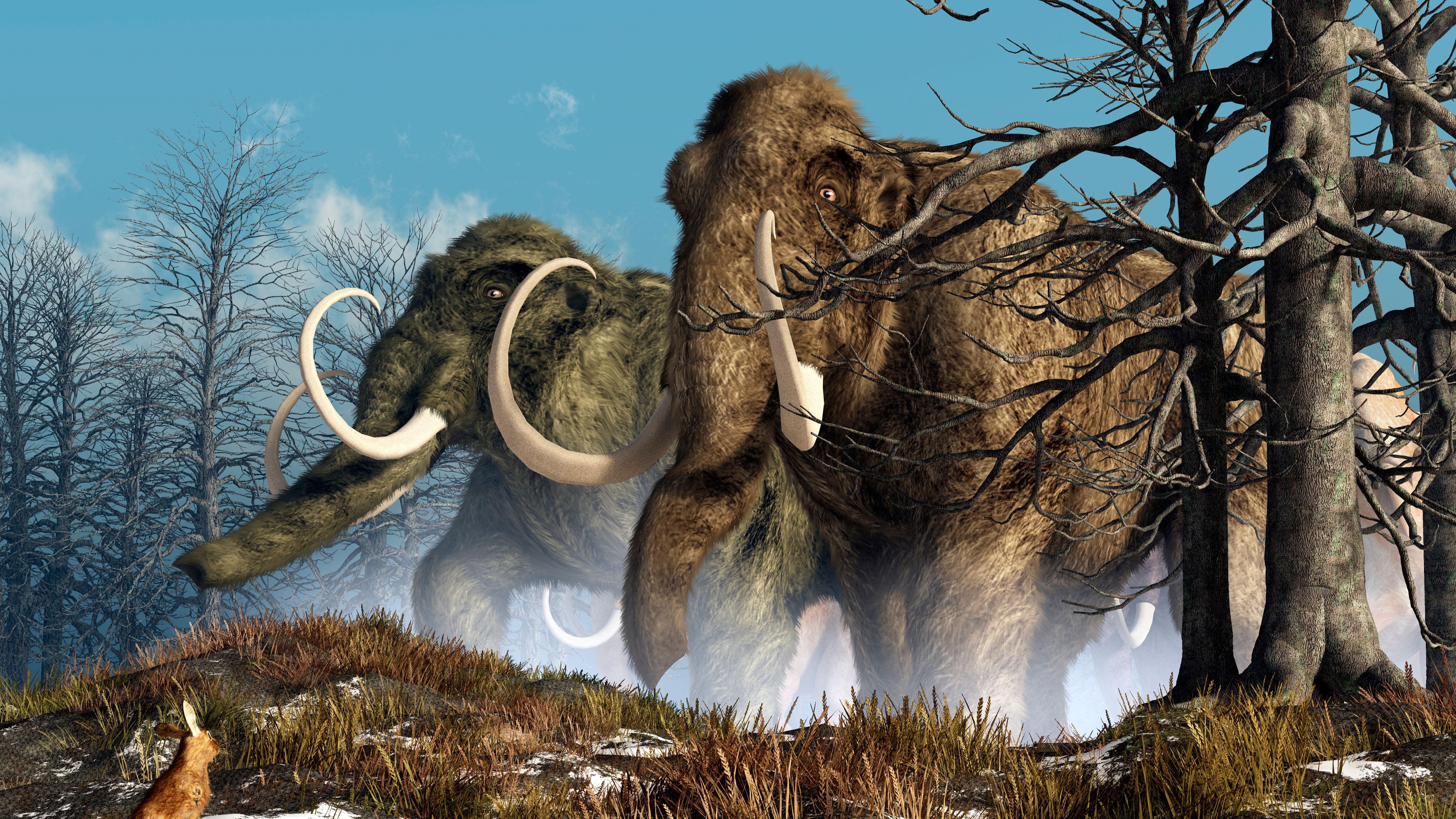Pollen allergies drove woolly mammoths to extinction, study claims
A boom in vegetation at the end of the last ice age may have created so much pollen, it blocked mammoths' sense of smell. A new study suggests this drove the beasts to extinction, but not everyone agrees.

Clouds of pollen floating over the mammoth steppe at the end of the last ice age may have helped drive woolly mammoths to extinction, a new study claims.
Researchers say a boom in vegetation due to global warming may have released so much pollen, it triggered allergic reactions in animals — blocking their sense of smell and preventing them from communicating normally with one another. The inability to sniff each other out during the breeding season would have prevented mammoths from finding sex, the team argue, leading to a precipitous drop in population size and, eventually, extinction.
"One of the possible mechanisms for the extinction of animals during climate change could be a violation of the sense of smell due to the development of allergies when the flora changes," the researchers wrote in the study, which was published Aug. 27 in the journal Earth History and Biodiversity. "The purpose of this work is to propose a new evolutionary mechanism for the extinction of mammoths and other animals based on the disruption of communication."
Woolly mammoths (Mammuthus primigenius) lived during the Pleistocene epoch (2.6 million to 11,700 years ago). They disappeared across much of their range around 10,000 years ago, although a small population survived on Wrangel Island — a remote island off northeastern Russia — until 4,000 years ago. Researchers think a combination of inbreeding, hunting by humans and major changes in vegetation all pushed mammoths to extinction, but there is ongoing debate about how much each of these factors contributed to their demise.
Allergies would have disturbed several vital functions of mammoth life, the researchers argue. Animals use their sense of smell to find food and mates, to navigate during migration and to evade predators, so the mammoths' stuffed-up trunks may have doomed them, the researchers wrote in the paper.
One way to test if mammoths suffered from allergies is to examine their stomach content for plants and pollen that trigger allergies, the authors of the new study suggest. Some carcasses also have pollen embedded in the mummified tissues or preserved plant material around them that could help identify past irritants, according to the study.
Get the world’s most fascinating discoveries delivered straight to your inbox.
Next, to determine whether these chemicals actually triggered an allergic reaction in mammoths, the researchers suggest looking for the immune system proteins the body produces during an allergic response. One of the main ones is immunoglobulin E (IgE), which is produced in the intestine and then pooped out, so testing fossilized mammoth feces, or coprolites, could be a way to see if the mammoths had bad cases of hay fever. So far, no published research has looked for traces of IgE in ancient mammal samples, according to the study.
One expert isn't convinced that allergies played a big part in the downfall of mammoths. "This idea seems pretty far out there and I'm not sure how you would ever prove it," Vincent Lynch, an evolutionary biologist and associate professor at the University at Buffalo in New York, told Live Science in an email.
Ancient DNA samples do indicate that the last-surviving woolly mammoths lost the ability to smell certain plants, Lynch said. The reconstructed genome of a mammoth from Wrangel Island showed mutations in genes associated with the ability to detect floral scents, suggesting the last mammoths couldn't smell flowering plants.
However, until the authors' idea is experimentally tested and supported by further research, Lynch said he still thinks a combination of environmental factors and human impacts caused mammoths to die out.

Sascha is a U.K.-based staff writer at Live Science. She holds a bachelor’s degree in biology from the University of Southampton in England and a master’s degree in science communication from Imperial College London. Her work has appeared in The Guardian and the health website Zoe. Besides writing, she enjoys playing tennis, bread-making and browsing second-hand shops for hidden gems.


